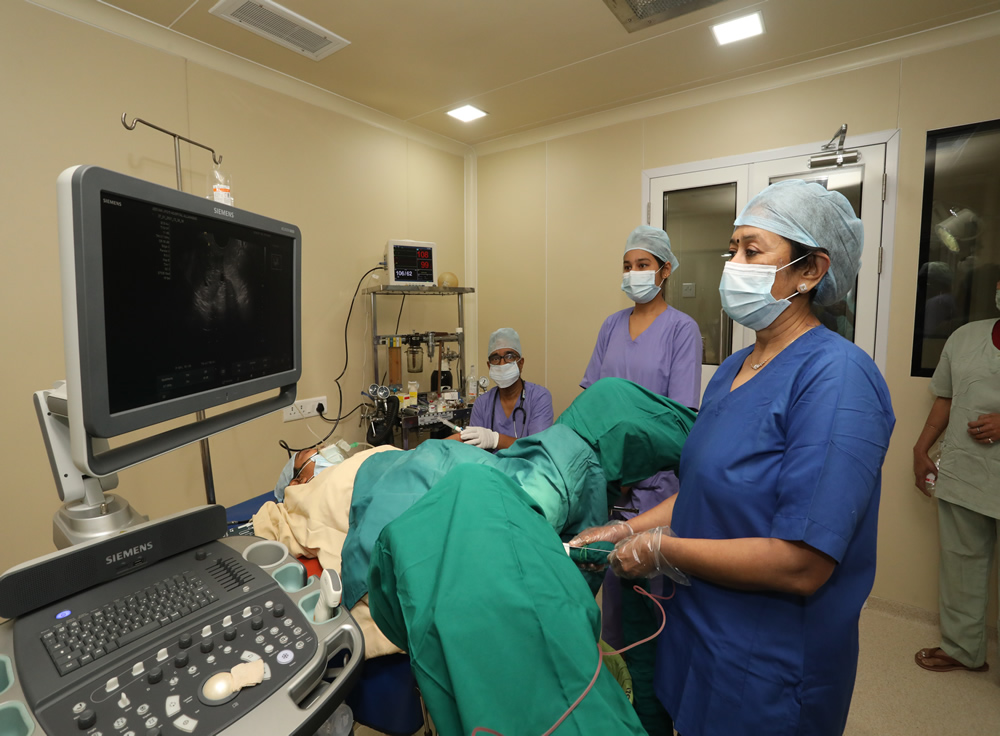Advanced Hysteroscopy
Hysteroscopy is a procedure that provides a way for the Doctor to look inside the uterus. A hysteroscope is a thin tube with a light and camera at the end. This scope is inserted into the cervix and uterus through the vagina. A doctor will use the hysteroscope to look for anything abnormal and even take samples from the uterine wall to test for factors that will help diagnose or treat a uterine problem.
Hysteroscopy is a minor, outpatient surgery that can be performed with local, regional, or general anesthesia. Sometimes no anesthesia is needed. There is little to no risk involved with this procedure for most women.

There are two kinds of hysteroscopy: Diagnostic and Operative.
There are two kinds of hysteroscopy: Diagnostic and Operative.
Diagnostic hysteroscopy is commonly performed on women who are experiencing heavy menstrual periods and severe cramping; or, it may be ordered if your doctor needs to know more about your reproductive health.
Operative hysteroscopy can be used to correct various uterine conditions. Operative hysteroscopy is used to correct abnormalities that were detected during a diagnostic hysteroscopy. Hysteroscopy can be used to remove uterine polyps and fibroids, locate and remove bands of uterine scar tissue called adhesions, determine whether a septum (a malformation of the uterus formed at birth) is present, and help identify the cause of abnormal bleeding and menstrual flow.
Who Is a Candidate for Hysteroscopy?
Common reasons for the need for a hysteroscopy are periods that are longer or heavier than usual or bleeding between periods.
You might also need the procedure in these situations:
- Abnormal Pap test results.
- Bleeding or spotting after menopause.
- Uterine fibroids, polyps, or uterine scarring
- More than one miscarriage
- Problems getting pregnant
- Sterilization
- If a tissue biopsy of the uterus is needed
- To replace a dislodged IUD
Potential Risks and Side Effects of Hysteroscopy
Hysteroscopy is a reasonably safe procedure and problems arise in less than one percent of cases. If you experience symptoms like fever, severe abdominal pain, or heavy bleeding after the procedure.
How Advanced Hysteroscopy Can Help: Is Hysteroscopy the Right Diagnostic Tool for You?
If you are suffering from uterine pain and heavy or unusual menstrual bleeding, Advanced Hysteroscopy is here for you.
Our team of women’s health experts is ready to help you with diagnostic care and a range of treatment options.
We will counsel you about the best options for you and your health.
When is hysteroscopy needed?
Hysteroscopy is needed for the following conditions:
- Narrowing down the appropriate cause for abnormal uterine bleeding.
- Diagnosing the reason for abnormal Pap test results.
- Finding factor for bleeding post-menopause.
- Inserting birth control into the fallopian tubes.
- Diagnosing the cause of infertility or multiple miscarriages.
- Finding and removing displaced intrauterine devices.
- Removing small polyps, fibroids, or scar tissues in the uterus.
- Removing small tissue for biopsy.
- Removing endometrial lining.